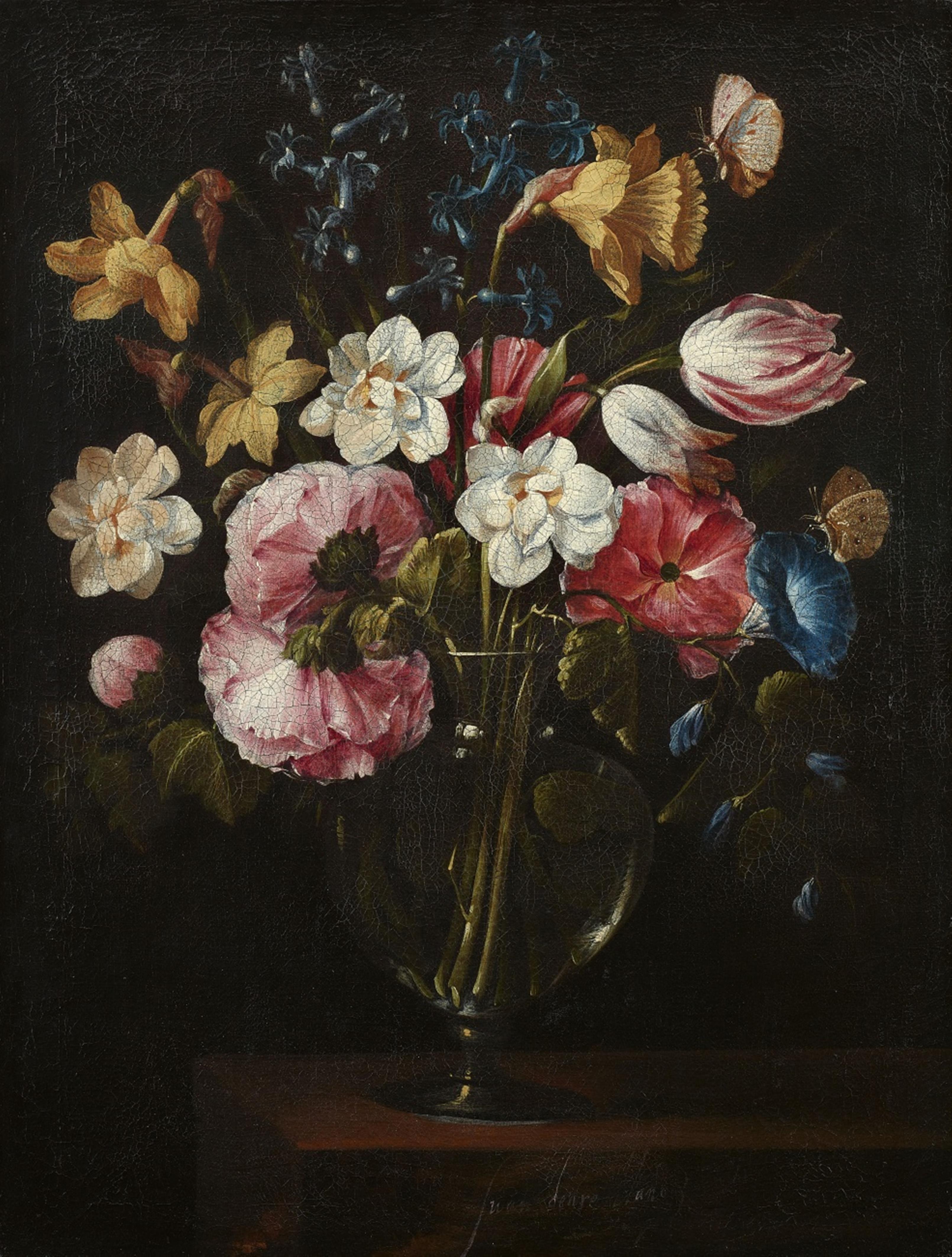Juan de Arellano
A Still Life with Daffodils, Narcissi, Hollyhocks, and Hyacinths in a Glass Vase on a Stone Ledge
Oil on canvas. 54.7 x 45.4 cm.
Signed lower centre: Juan de Arellano.
This painting depicts a careful arrangement of just a few long-stemmed flowers in a glass vase placed upon a wooden ledge. The arrangement and the meticulous technique with which the blooms are depicted suggests that this is a relatively early work by Juan de Arellano. It is close in style to a number of still lifes by his hand from the mid-1640s and to the pair of masterpieces, Festoons of Flowers with a Cartouche Surrounding a Landscape, both signed and dated 1652, in the Museo del Prado. At this time, Arellano's paintings reveal his close study of Flemish flower still lifes, especially those of Daniel Seghers (1590-1661).
The composite nature of such works was admired in the period, since this demonstrated the artist's creative superiority over the natural world. Arellano's pride in his distinctive painterly ability is reflected in the prominent signing of this painting, with his full name in fine, white lettering.
Juan de Arellano was the most accomplished Spanish painter of flowers during the seventeenth century. His earliest signed and dated work is the Garland of Flowers with Vanitas, 1646 (Private collection, Seville). The Vanitas is signed by Francisco Camilo and the wreath by Arellano. Paintings by Flemish and Italian flower specialists, such as Mario Nuzzi (1603-1673) and Daniel Seghers, entered the collections of the Court and aristocracy in Spain, giving a spur to a Spanish school of flower painting. The inventory of his studio in the Archivo Histórico de Protocolos de Madrid suggests that he may also have acted as a picture dealer. Arellano died in Madrid in 1676.

